GENERAL DATA
Plant Parts: Leaves, flowers, flower oil, flower hydrosol
Cultivation Mode: Wild collection/ Cultivated
In Manufacturing: Pharmaceutical, Oil, Beverages, Herbal Tea, Hydrosol, Confectionery, Dairy
Foods: Halva
🌸 Industries That Use Musk Willow Flowers (Bidmeshk)
Derived from Salix aegyptiaca L.
Musk Willow, locally known as Bidmeshk, is a species of flowering willow native to Iran, Central Asia, and parts of the Caucasus. Its highly fragrant male catkins (flowers) are traditionally harvested and used in herbal medicine, aromatics, and natural remedies. They are rich in essential oils, flavonoids, salicylates, and volatile aromatic compounds.
1. Traditional & Herbal Medicine Industry
In Persian medicine, Bidmeshk flowers are highly revered as tonics and cardio-calming agents.
-
Mild sedative and anxiolytic (calms the nervous system)
-
Heart tonic: believed to strengthen cardiac function and reduce palpitations
-
Mood enhancer: recommended for fatigue and melancholia
-
Used in:
✅ Often macerated in rosewater or vinegar for extraction.
2. Perfumery & Aromatic Industry
Bidmeshk is one of the most fragrant willow species and holds traditional significance in Iranian perfumery and natural scent production.
-
Used in:
-
Hydrosols (Aragh-e-Bidmeshk)
-
Aromatic waters and oils
-
Botanical perfumes and attars
-
-
Known for its soft, sweet-musky aroma with mild floral and woodsy notes
✅ Forms part of traditional ritual fragrances and non-alcoholic perfumery in Iran and Central Asia.
3. Beverage & Functional Drink Industry
The famous Aragh-e-Bidmeshk (Musk Willow distillate) is a popular health beverage in Persian culture.
-
Used for:
-
Cooling the body
-
Balancing mood and stress
-
Flavoring herbal drinks
-
-
Sometimes blended with:
-
Saffron, Damask rose, or Lemon balm
-
✅ Marketed as a traditional functional wellness drink in Middle Eastern stores.
4. Cosmetic & Skincare Industry
The essential oil and floral water extracted from Bidmeshk are used in natural skincare for:
-
Soothing inflammation and redness
-
Aromatherapy skin sprays
-
Delicate toners and anti-fatigue facial mists
✅ Especially valued for its gentle, hypoallergenic nature.
5. Ethnic & Cultural Products
-
A key ingredient in:
-
Persian New Year (Nowruz) herbal baskets
-
Traditional medicine chests
-
Natural aphrodisiac and heart-health blends
-
-
Exported in:
-
Dried form
-
Hydrosols (aragh)
-
Powdered floral extracts
-
✅ Common in Iranian diaspora markets, traditional herbal shops, and e-commerce.
✅ Summary of Key Applications
| Industry | Common Uses |
|---|---|
| Herbal & Traditional | Calming tonic, heart relaxant, antidepressant, aphrodisiac |
| Beverage Industry | Aromatic hydrosol drinks (Aragh-e-Bidmeshk), traditional health beverages |
| Perfumery & Fragrance | Floral waters, botanical perfumes, scented sachets |
| Skincare & Cosmetics | Anti-inflammatory sprays, toners, mists |
| Cultural & Export | Herbal gifts, hydrosols, Nowruz baskets, Persian herbal formulations |
🌿 Key Features of Musk Willow Flowers (Bidmeshk)
-
Botanical Name: Salix aegyptiaca L.
-
Common Name: Musk Willow, Bidmeshk, Aragh-e-Bidmeshk
-
Plant Part Used: Male catkins (flowers)
-
Fragrance Profile: Sweet, musky, lightly floral
-
Traditional Use: Persian and Central Asian herbal medicine
-
Forms: Dried flowers, hydrosol, syrup, floral extract
-
Harvest Season: Early spring (male catkins)
PRODUCT NAME IN DIFFERENT LANGUAGES
Persian Name: بیدمشک/ Bidmeshk
German Name (Deutschland, Austria, Switzerland): Persische Weide
French Name (France, Belgium, Switzerland, Quebec): Saule
HARVEST CALENDAR
Feb
Mar
Apr
May
Jun
Jul
Aug
Sep
Oct
Nov
Dec
To order Egyptian Willow, please contact us.
About Salix Aegyptiaca
The height of the Salix aegyptiaca tree reaches eight meters. The leaves are oval, pointed, slightly hairy and relatively thin, their edges are saw-shaped and they have short petioles. The color of the back of the leaves is lighter than the top.
The flowers are a collection of pale yellow and fluffy strings that grow in an egg shape. There is a bright yellow seed at the head of each of these strands. The flowers are very fragrant and bloom before the young leaves grow.
The fruits are small, elongated, conical, relatively narrow and green and grow in clusters.
Musk Willow Temperament
The flower of the Musk Willow tree is cold in the second degree and moist in the first degree. Its leaves have a cold and dry temperament. The fruit is cold and moist in the first degree.
Musk Willow Chemical Constituent
Salicin glycoside, daphneflavonolosides, populosides.
Musk Willow Health Benefits
Persian Willow unclogs cerebral congestion and is laxative. Its hydrosol is tonic for the brain, heart, and intestines.
Its hydrosol strengthens sexual power in warm temperament people.
Its flower cures headaches which are caused by hot stomach vapors. Smelling flowers or hydrosol strengthens the brain.
Gargling the extract of Egyptian Willow leaves removes the leech left in the throat.
Its flower oil prevents the rise of stomach vapors, it is useful for hot headaches, and eating it can cool the blood in people who have hot blood.
Musk Willow Dose
Pussy Willow hydrosol can be drinking 20 to 48 grams just on the condition that we add some sugar, honey, or rock candy to it.
Musk Willow Side Effects
Drinking Persian Willow hydrosol without sweeteners causes blood sugar to drop. So, it is better to drink it with some sugar, honey, or rock candy.
Musk Willow Modifiers
Rose water and sugar.
🧾 Nutrition Facts – Musk Willow Flowers (Dried) (100g)
Botanical Name: Salix aegyptiaca L.
Common Names: Musk Willow, Bidmeshk, Egyptian Willow, Salix Flower
Plant Part Used: Male catkin (flower clusters), dried
Traditional Uses: Nervine tonic, sedative, mood-lifting, aphrodisiac, heart-strengthening, aroma therapy in TPM and Unani medicine
🔹 General Composition (Per 100g, dried catkins)
| Nutrient | Amount | % Daily Value (DV) |
|---|---|---|
| Calories | ~280 kcal | 14% |
| Water | ~5 g | — |
| Protein | ~5 g | 10% |
| Total Fat | ~2.1 g | 3% |
| • Saturated Fat | ~0.4 g | 2% |
| Carbohydrates | ~58 g | 21% |
| • Dietary Fiber | ~26 g | 93% |
| • Natural Sugars | ~15 g | — |
🔬 Minerals
| Mineral | Amount | %DV |
|---|---|---|
| Calcium | 220 mg | 17% |
| Iron | 3.2 mg | 18% |
| Magnesium | 85 mg | 21% |
| Potassium | 520 mg | 11% |
| Phosphorus | 55 mg | 4% |
| Zinc | 0.5 mg | 5% |
| Manganese | 0.6 mg | 26% |
🌿 Vitamins
| Vitamin | Amount | %DV |
|---|---|---|
| Vitamin C (Ascorbic Acid) | ~20 mg | 22% |
| Vitamin B1 (Thiamine) | 0.04 mg | 3% |
| Vitamin B2 (Riboflavin) | 0.05 mg | 4% |
| Niacin (B3) | 0.9 mg | 6% |
| Folate (B9) | 10 mcg | 3% |
| Vitamin A (Carotenoids) | ~50 IU | 1% |
🧪 Phytochemical Compounds
Musk Willow catkins are rich in:
-
Salicin (a natural precursor to salicylic acid – anti-inflammatory)
-
Flavonoids (quercetin, kaempferol)
-
Phenolic glycosides
-
Tannins
-
Essential oils (light musky aroma)
-
Volatile compounds (eugenol, linalool, methyl salicylate)
🏺 Traditional Applications
| System | Use |
|---|---|
| TPM (Persian Medicine) | Heart and nerve tonic, uplifting mood, aphrodisiac |
| Unani & Herbal Medicine | Calmative, used in herbal syrups and tonics |
| Aromatherapy | Relaxing scent, used for anxiety, headaches, insomnia |
| Culinary (Persian) | Infused into syrups (Sharbat Bidmeshk), drinks |
| Pharmaceutics | Salicin source for pain relief and anti-inflammatories |
⚠️ Caution & Dosage
-
Suggested intake: 1–2 g/day as tea or infusion; up to 10 mL/day of aromatic syrup
-
Safety: Generally safe in moderate use; salicin-sensitive individuals should avoid
-
Note: May interact with blood thinners or aspirin-sensitive users
📦 Storage
-
Store in airtight containers away from light, heat, and moisture
-
Best preserved in glass jars or foil pouches to retain aroma
🧪 Disclaimer
This profile is for informational and educational purposes only. Nutrient values are based on ethnobotanical sources and lab estimates. Composition may vary by region and drying method. Always consult a healthcare provider before internal use, especially in case of chronic conditions or medication.
To order Bidmeshk, please contact us.


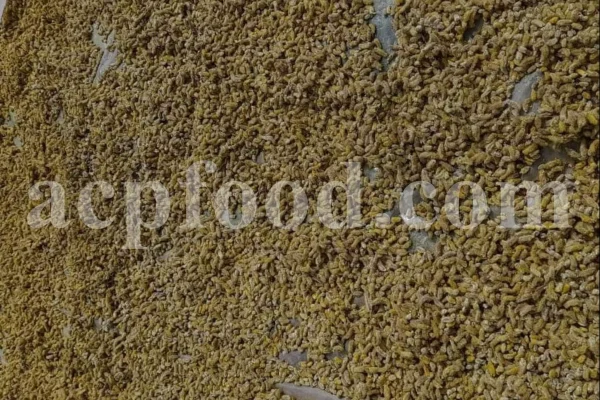



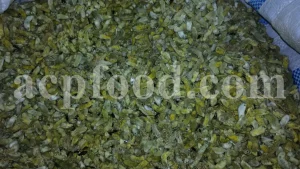
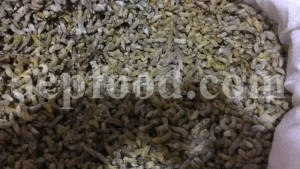
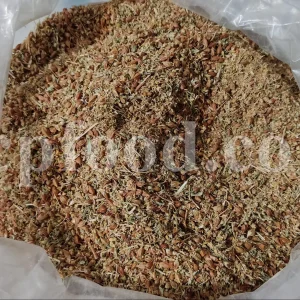
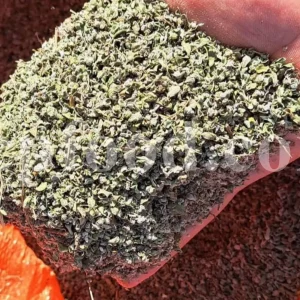
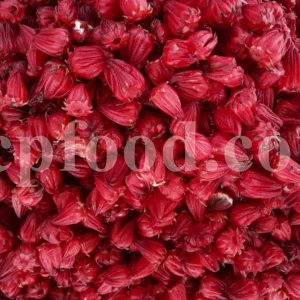
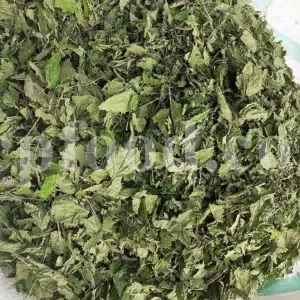
Reviews
There are no reviews yet.